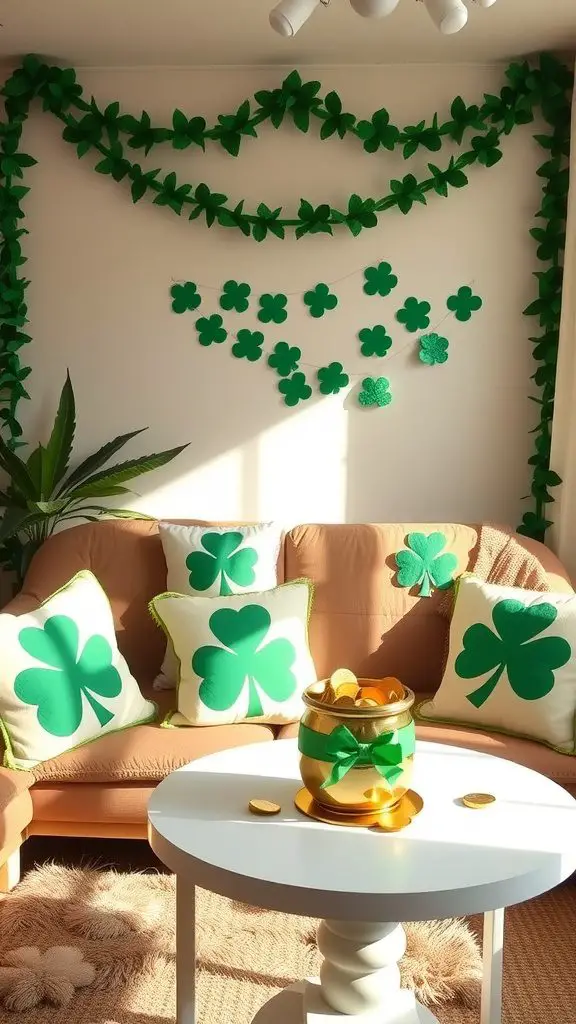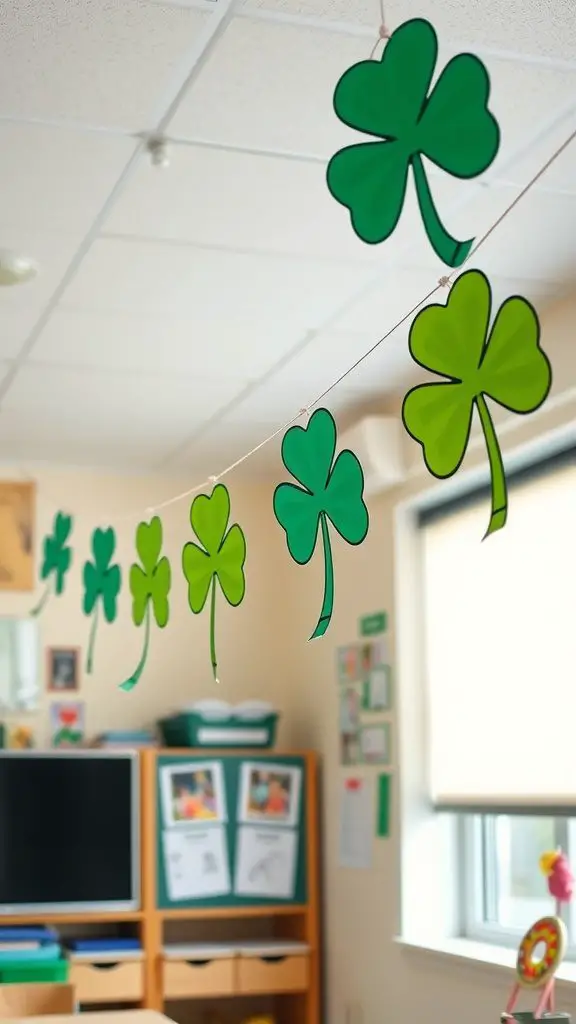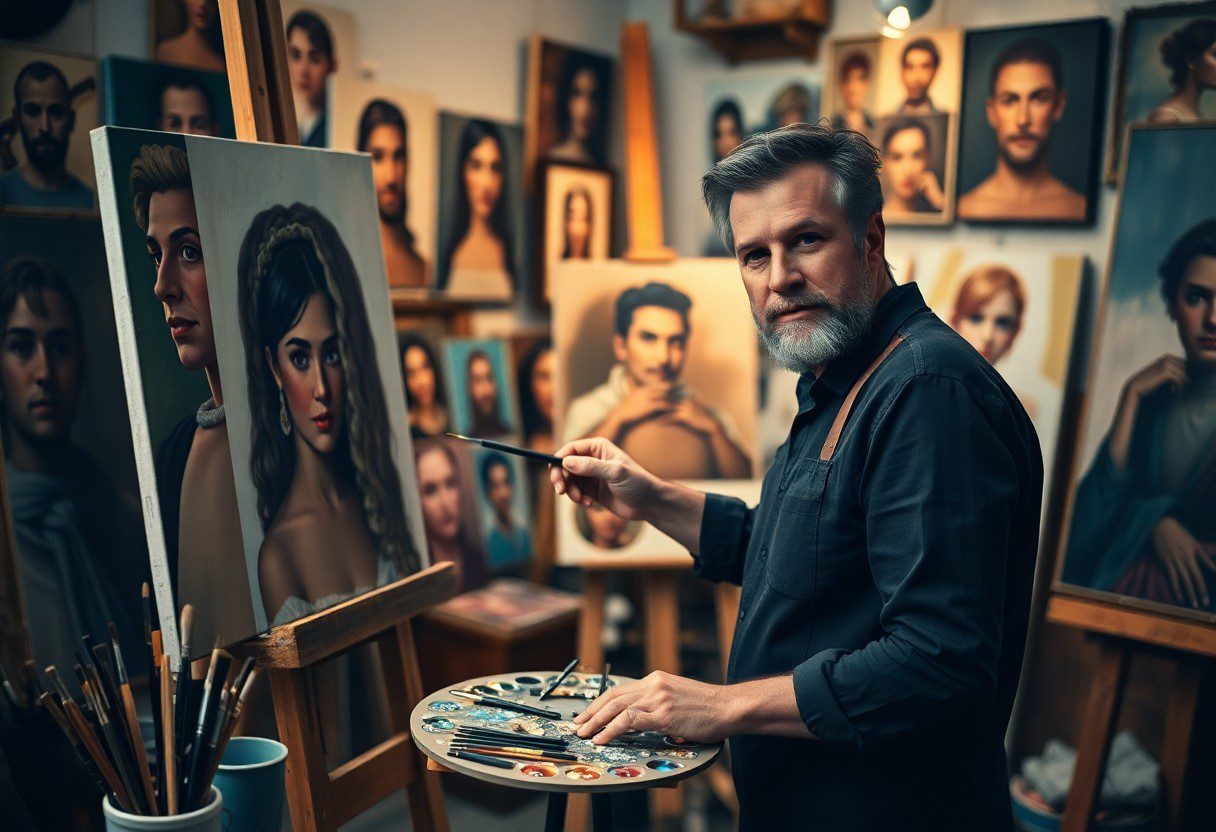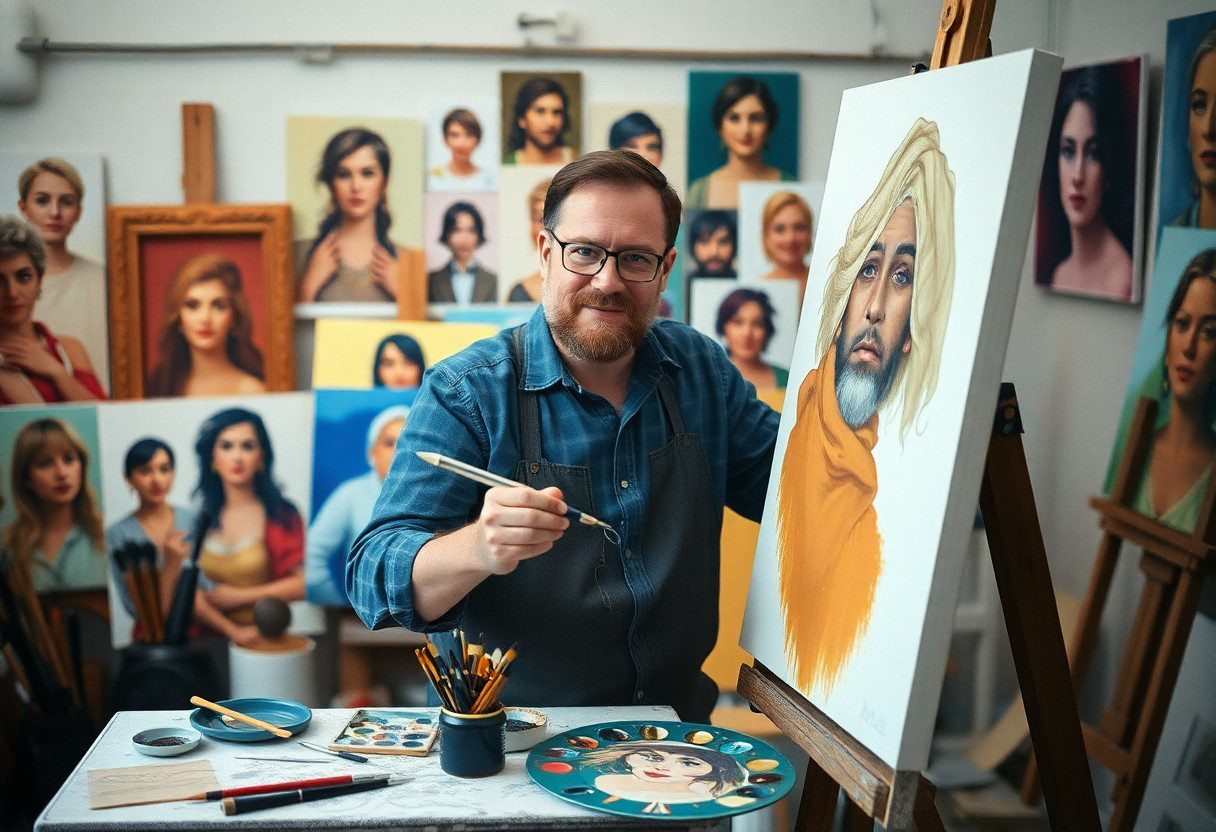Portrait painting offers a unique opportunity to capture the essence of a person, allowing you to express emotion and character through your art. In this blog post, you’ll learn crucial DIY techniques that will enhance your skills, from understanding composition to mastering color theory. By employing these practical tips, you can elevate your portrait painting to a professional level, bringing your creative vision to life with every stroke. Join us as we explore the foundational methods that will help you excel in this timeless art form.
Understanding Portraiture
A deeper understanding of portraiture allows you to capture the essence of your subject beyond mere likeness. By studying the history, techniques, and key elements of great portrait painting, you will enhance your artistic skills and develop a more profound connection with your subjects. As you initiate on this journey, you will discover how each stroke contributes to the storytelling aspect of your art.
Historical Context
Any exploration of portraiture reveals its evolution through time, reflecting cultural shifts and artistic movements. From the detailed realism of the Renaissance to the emotive brushwork of Impressionism and beyond, portraits have served as historical records, social commentary, and personal expressions. When you understand this context, you can draw inspiration from these periods while crafting your own unique style.
Elements of a Great Portrait
Across the board, the elements of a great portrait encompass composition, lighting, color, and emotional connection. A successful portrait not only captures the physical attributes of the subject but also conveys their personality and essence. Pay attention to these aspects as you create, allowing them to guide your artistic choices.
Considering these foundational elements can significantly elevate your portrait painting skills. Focus on composition to create balance and harmony; use lighting to enhance features and evoke mood; select colors that reflect your subject’s personality and context. Additionally, strive to establish a personal connection with your subject, as this will infuse your work with authenticity and depth, helping you produce portraits that resonate with viewers on an emotional level.
Materials and Tools
Some of the most important aspects of mastering portrait painting lie in your choice of materials and tools. Selecting the right items can greatly influence the quality of your artwork and ensure that your creative process is smooth. From canvases to brushes, having the proper tools will facilitate your artistic expression and help you achieve the desired results in your portraits.
Choosing the Right Canvas
Across various styles and techniques, selecting the right canvas for your portrait painting is important. You can choose from a variety of surfaces including stretched linen, cotton, or even panels. Each option offers distinct textures and absorption characteristics, so consider which will best suit your planned painting approach and desired finish. A good canvas will support your artistic vision and provide a solid foundation for your portrait.
Essential Brushes and Mediums
Canvas types further complement your choice of brushes and mediums, which are equally important in portrait painting. You should select a mix of round, flat, and filbert brushes to effectively manage details, blending, and strokes. Additionally, various mediums can impact the flow and drying time of your paint, helping you create the desired layering effects and textures.
Choosing the right brushes and mediums affects every aspect of your painting process. Investing in quality brushes will provide you with better control and precision on the canvas, allowing you to render finer details in your portraits. The appropriate mediums, such as linseed oil or acrylic gel, can enhance the paint’s workability, enabling you to create rich textures and ghostly glazes. Each choice you make plays a significant role in elevating your artwork, allowing your unique style to shine through.
Basic Techniques
Now that you’ve decided to begin on your portrait painting journey, mastering basic techniques will form the foundation of your skill set. Understanding these elements will not only enhance your technique but also significantly improve the overall quality of your portraits. Focus on aspects like sketching, color mixing, and layering to build up your confidence and create stunning works of art.
Sketching the Outline
Sketching your outline is vital for establishing the proportions and layout of your portrait. Begin by lightly marking key points such as the chin, eyes, and forehead, ensuring their placements are accurate. Using a pencil or thin brush, create gentle lines to guide your painting without overpowering the final piece.
Underpainting Methods
The underpainting process lays the groundwork for your artwork, allowing you to build a solid color base before applying additional layers. This technique helps in defining values and creating a sense of depth in your portrait.
Hence, you can use various underpainting methods like grayscale or complementary colors to establish the mood of your portrait. Employing a monochromatic palette emphasizes light and shadow, while complementary colors can enhance vibrancy and contrast. Allow your underpainting to dry before adding additional layers, as this will provide a well-defined base that will enrich your final result.
Color Theory
For successful portrait painting, a solid understanding of color theory is crucial. It allows you to mix hues effectively, create mood, and portray your subject accurately. By mastering color relationships and the impact of warm and cool tones, you can transform a flat image into a vibrant, lifelike portrayal. You’ll learn how to manipulate color to evoke emotion, making your paintings not just visually appealing, but also expressive.
Skin Tones and Color Mixing
Color plays a significant role in achieving realistic skin tones. Begin by recognizing the underlying tones within your subject’s skin, as they often contain a blend of warm and cool hues. Start with a basic palette of red, yellow, blue, and white; mixing these will allow you to create a variety of skin tones that enhance the lifelike quality of your portrait.
Creating Depth with Shadows
Depth in your painting is enhanced through thoughtful shadow placement. By understanding how light interacts with form, you can create dimension and lifelike qualities in your portraits. Shadows, when applied correctly, help to define features, add volume, and draw attention to key areas of your artwork.
Skin can appear flat without carefully considered shadows. Use darker tones of your skin mixtures, perhaps with a hint of blue or purple for cooler shadows, to define planes of the face. Focus on areas like beneath the cheekbones, around the nose, and under the chin. These shadows will not only create depth but also enhance the natural contours of your subject, bringing your portrait to life.
Advanced Techniques
After mastering the basics, you can elevate your portrait painting with advanced techniques that add depth and dynamism. Consider the following approaches:
TechniqueDescription| Layering | Building multiple layers of paint for increased realism. |
| Glazing | Applying translucent layers to achieve luminous colors. |
| Scumbling | Creating a textured effect by brushing on a thin layer of paint. |
Layering for Realism
Besides adding depth and dimension, layering techniques significantly contribute to the realism of your portraits. By gradually building up color tones and values, you can create subtle gradations that enhance facial features and textures, ultimately making your subjects come alive on canvas.
Texturing Techniques
One effective way to add depth to your paintings is by using various texturing techniques. These methods can help bring realism to hair, skin, and clothing, allowing viewers to connect emotionally with your artwork through its intricate details.
Considering the impact of texture in your painting, you can utilize tools like sponges, brushes, or even your fingers to manipulate the surface of your canvas. Experimenting with different materials and ways to apply paint will yield unique textures that can evoke various emotions and enhance visual interest. Your ability to integrate texture will differentiate your work and give it a more personal, expressive touch.
Finishing Touches
Unlike the initial stages of painting, the finishing touches are where your portrait truly comes to life. This phase includes final adjustments to color and texture, ensuring that every detail appears polished and intentional. Paying attention to the small nuances will elevate the overall quality of your artwork and can make all the difference in how it is perceived by others.
Varnishing Your Artwork
For protecting your painting and enhancing its visual appeal, applying a varnish is an vital step. Varnish acts as a shield against dust, dirt, and UV light, ensuring that your work retains its vibrancy over time. Choose between a matte or gloss finish depending on your desired effect, and apply it evenly to give your portrait a professional look.
Framing and Displaying
Along with varnishing, selecting the right frame is vital to showcasing your portrait. A well-chosen frame not only enhances the aesthetic appeal but also protects the edges of your artwork. Consider using a classic wood frame for traditional portraits or a modern metal frame for contemporary pieces.
Considering the location and style of your space is important when framing and displaying your portrait. Evaluate the colors and materials in your room to select a frame that complements the artwork. Additionally, be mindful of lighting; natural light can enhance your portrait’s colors, but ensure it isn’t direct sunlight, which may fade the painting over time. Ultimately, your display choices should reflect your personal taste while enhancing the artwork’s beauty.
Summing up
On the whole, mastering portrait painting involves understanding crucial techniques that you can readily apply in your own practice. From capturing accurate proportions and skin tones to experimenting with lighting and texture, these DIY methods empower you to elevate your artistic skills. By practicing these techniques, you can develop your unique style and create portraits that resonate with viewers. Embrace the journey, and soon you’ll find your confidence and creativity flourishing on the canvas.
FAQ
Q: What materials do I need to get started with Master Portrait Painting?
A: To begin with Master Portrait Painting, you’ll need a variety of materials including high-quality canvas or watercolor paper, a set of professional-grade paints (oil or acrylic), brushes of different sizes, a palette for mixing colors, an easel, and a reference photo for your portrait. It’s also helpful to have a pencil for sketching and some rags or paper towels for cleaning your brushes.
Q: How do I choose the right reference photo for my portrait painting?
A: Selecting the right reference photo is key to successful portrait painting. Look for images with good lighting and clear facial expressions, as these will provide you with better detail to work from. It’s ideal to choose a photo that showcases the features and characteristics of your subject, and consider the colors and background as well. Close-up images can give more detailed views of the face, while more distant shots can help with proportions and overall composition.
Q: What are the crucial techniques for achieving skin tones in portrait painting?
A: Achieving realistic skin tones involves understanding the color wheel and mixing complementary colors. Start with a base skin tone, which typically includes a mix of red, yellow, and white. From there, adjust with variations of blue or green for shadows and orange for highlights. Layering these tones gradually will help achieve the luminosity and depth found in human skin. It’s also useful to study the undertones of different skin types to better capture their uniqueness.
Q: How can I improve my brush technique when painting portraits?
A: Improving brush technique requires practice and a willingness to experiment. Focus on the pressure you apply to the brush and vary the strokes; lighter strokes can create softer edges, while more pressed strokes can add depth to features. Try different brush types to see how they affect your work, such as fan brushes for texture or flat brushes for bold strokes. Practicing on smaller canvases or sketch pads can help you develop control before moving on to larger pieces.
Q: What should I do if I’m unhappy with my portrait painting?
A: It’s common to feel unsatisfied with your work at times. Step back and assess what you’d like to change, whether it’s the colors, proportions, or overall composition. Sometimes, simply adjusting the contrast or adding more details can improve the appearance. If necessary, consider repainting certain sections rather than starting over. Additionally, getting feedback from fellow artists or taking a break can provide new perspectives and boost your creativity.




